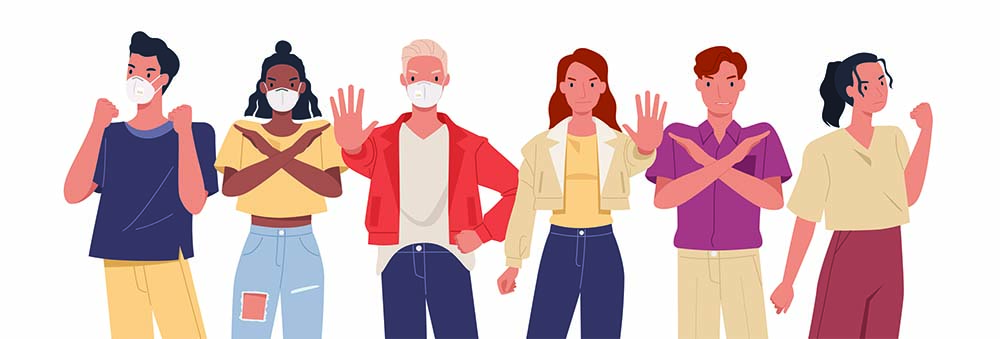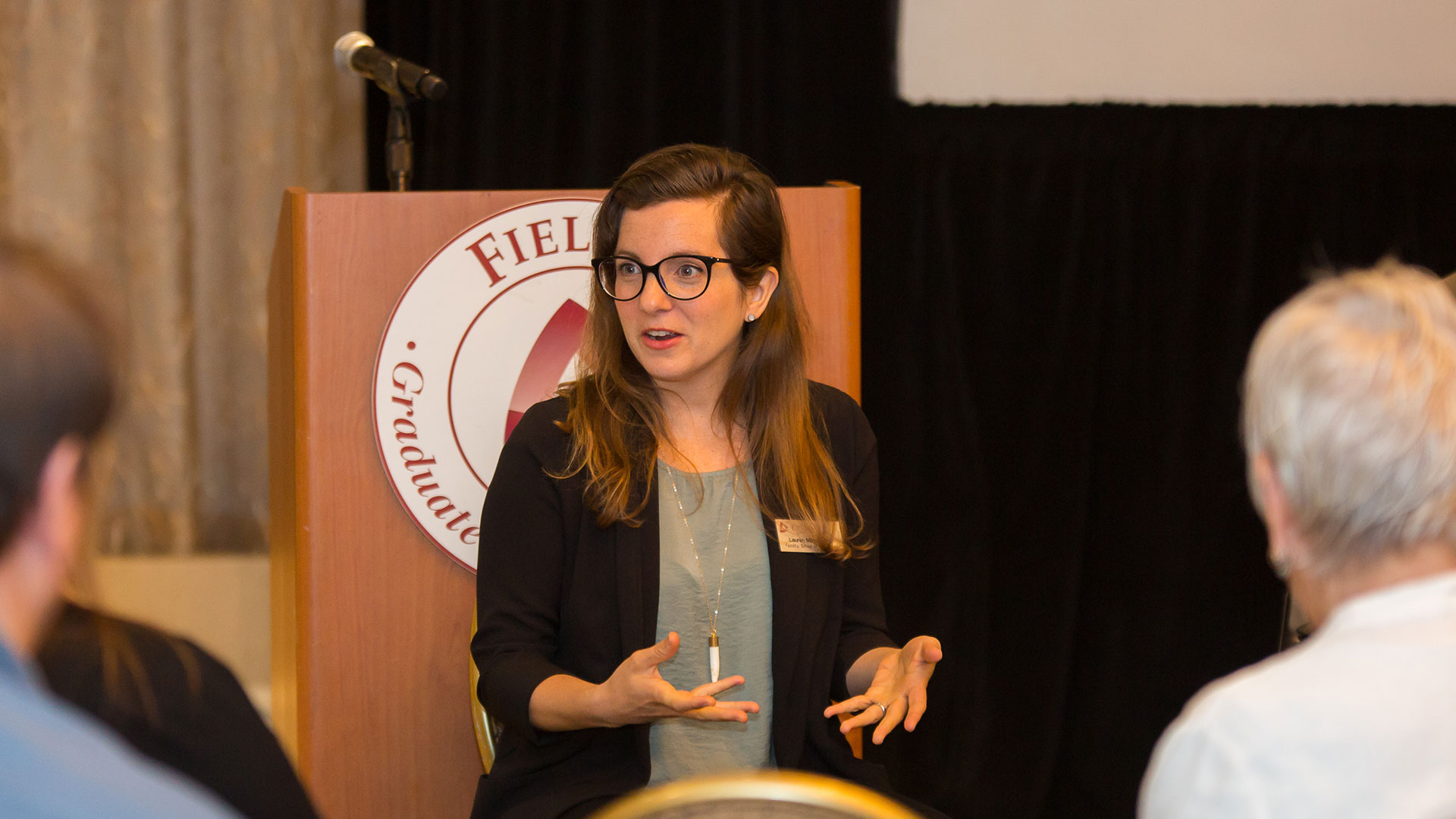BY PAM RUTLEDGE, PHD
Doctoral faculty, Media Psychology
JUNE 20, 2020
The voice of reason is entirely missing when stories activate fight or flight. Anything that is perceived as an attack on beliefs, identity or affiliation shuts down cognitive processes and makes collaboration difficult, if not impossible. Narratives reveal core values that have to be addressed for both groups for compromise to be achieved and conflict resolved. There is no “changing the other guy’s mind” when the fundamental worldview is so different. This is true in politics, business negotiations, consume behavior and interpersonal relationships. The solution: Deconstruct the competing narratives to identify the underlying beliefs. The ‘Face Mask Culture War’ isn’t about face masks at all. Compromise can only come from understanding and acknowledging the root motivations of each side and working from there.
COVID-19 has seriously undermined the sense of individual control, increasing feelings of vulnerability and helplessness around the globe. People who prioritize individual freedom will be hypersensitive to anything that feels like a further violation of their agency and freedom. When people are afraid, their cognitions become narrower, reducing issues to binary, on/off, black/white simplistic thinking. It is in this environment that stories targeting fears can root and grow.


Trojan Horses of Persuasion
Stories do more than transmit information; they deliver a message with a point of view that is invited in and internalized by the audience. Stories can change minds, solidify beliefs and drive social movements by triggering our instinct. Stories reveal a lot about society, especially In times of conflict. Stories do more than transmit information; they communicate a message and a point of view. Storytelling is the foundation of all effective persuasive political, economic, and personal communication because it relies on emotion, not facts. Stories can change minds or solidify beliefs. Emotion, identification, and desire make stories feel personally relevant, meaningful, and memorable. They can be used to bring people together or drive them apart. There are few better examples of divisive storytelling than those fueling the culture wars over wearing face masks.
Stories rely on the audience’s ability to identify and invest in the narrative. Consequently, stories are used to define groups, reinforce differences, signal affiliation, express opinions and promote values and beliefs. The face mask stories expose fundamental ideological and moral differences that have more to do with a worldview than with actually wearing masks.
Stories are always told from the perspective of the storyteller and include the information and context that frame and support the storyteller’s message. Stories are not like research reports with evidence both pro and con. In research, ‘cherry-picking’ is selecting only data and information that supports your hypothesis. Storytellers, by comparison, actively condense content to get their message across.
Stories: Feeling Good vs. Being Right
We automatically embrace stories that feel right, rather than are factually correct. Things that feel right to support our current worldview. As worldviews diverge, such as they have in the pandemic culture wars over the value of social distancing and masks versus economic reopening and, now personal freedom, the stories become more embedded in ideology and less reliant on reality.
The structure of a story leads the audience from the hook to the conclusion. The hook is a deviation or threat to expectations that we hold or value. Sensationalism, hyperbole, and threats signal a potential danger to individual, social and environmental needs, hopes and desires, and in doing so, set up the conflict necessary to the story’s structure. The more emotional and relevant the story, the more personal—and dangerous– it feels. Impending conflict triggers the instinctive fight or flight response that overrides reasoned analysis and gives the listener the solution to alleviate the danger. There’s no time for empirical observation when you’re brain thinks you’re running for your life.
Facts and empirical evidence are less reassuring than stories; they have no hook, no emotion, and require us to do heavy-lifting of analysis. It’s hard for science to compete with fiction because narratives provide it all. They make sense of ambiguity by providing images, information, and signals that frame meaning and suggest a conclusion. They do the sense-making for us. Our emotions are attracted to what feels right in the face of fear or uncertainty like a moth to a flame.
When we are fearful and anxious, which, by the way, is a perfectly appropriate response during a pandemic, we are less able to tolerate challenges to our world view. If we feel under attack, we are more likely to accept stories that tell us who or what to blame without question. There is an unsettling amount of evidence that demonstrates the power of emotion and the need for confirmation of beliefs over rationality in public narratives. It’s why we believe urban myths, conspiracy theories, and anecdotal stories as truths. We not only believe them, we actively share the stories that ‘make sense’ and explain what we don’t understand. The spread of information signals endorsement by others which validates our position and increases our sense of security.
Deconstructing Competing Face Mask Stories
It’s easy to see how stories frame our understanding by comparing the face mask narratives. Each side of the argument relies on stories that tap into primitive emotions. Each are based on very different world views and priorities.
The pro-mask stories have slogans like “I wear this to protect you,” “We’re in this together,” and cite authorities, such as epidemiologists and medical professionals, for social proof. The core argument is based on the value of community, social connection and altruism. The experts give facts within the limitations of their knowledge since COVID-19 is largely a mystery. Honest, but not compelling. They would do better to draft Oprah Winfrey, Ellen DeGeneres, Idris Elba, or Brad Pitt to make their case.
The anti-mask stories target more basic emotions. They thrive on the inclusion of threatening untruths that go unchallenged because believers don’t care. Most recent anti-mask stories include: 1) masks decrease oxygen for which there is no evidence and 2) that masks don’t do anything which is also not true—there’s a big difference between no effect and significantly (but not totally) reducing community spread. The newest and most dangerous story is that masks violate individual rights, which completely removes the argument from any community or collective values and places individual rights above all else.
From a narrative perspective, however, the anti-mask narratives are stickier. What we know about the brain says that its motivations are profoundly self-centered. We are wired to care more about our own survival than that of others. The things that most effectively attract our attention and trigger our emotions are what impact us personally, not someone else. The pro-mask narratives are less compelling because they are about community and caring for others, communicated primarily through numbers, percentages, and best guesses from scientists and medical professionals. Not emotional. Not personal. Not even relational.
By comparison, the anti-mask narratives target the individual with threats of safety (oxygen and livelihood) and the fear of losing autonomy. In doing so, they go right for the jugular of the fight or flight reaction. While the conflicting values of community versus autonomy should lead us into a thoughtful discussion and compromise on how to open up without infecting a lot of people – or at least to discuss at what point society has the right to make rules to protect the common good– they don’t. People are too afraid which inhibits compromise. On top of that, they are egged on by politicians who benefit politically from disorder and fear.
In spite of pleas by scientists, medical professionals, and healthcare workers, the new “freedom” narrative does not mention consideration of others, it is entirely an individual freedom stance. Resistance to masks has resulted in bullying and name-calling aimed at public officials trying to manage COVID outbreaks and, in Orange County, CA, death threats against the county health official who tried to mandate mask-wearing based on CDC protocols. It clear that the response to these narratives is not contemplative. It is reactive. The no-mask story does not extend to any logical conclusions about community spread or available medical care. The fact that masks are most effective in protecting others, not the wearer, has no room in an argument that values individual rights over all else.
These narratives are made powerful because of the images they create in people’s minds. The anti-mask images are more potent because they are easier to visualize and “feel” in your gut. Threatening survival and independence—two very core drivers—is a much more effective approach than targeting altruism if you’re trying to trigger emotion. The fact that the President refuses to wear a mask and has further politicized the wearing masks as supporting him with emboldens the anti-mask side because the President is an authority figure who is supposed to look out for all citizens. His endorsement of anti-science behavior as a symbol of affiliation allows people to offload responsibility for critical thinking.
If You Can See It, You Can Do It
Visualization is a popular technique in a number of therapies and meditation/mindfulness practices. It draws on theories of mental functioning that say how we construct our reality and identity, influences how we experience new information and events. Being able to visualize new outcomes expands our sense of self and the emotional and behavioral potentials of events we encounter.
Stories also allow us to ‘see’ new worlds and new ways of being, increasing our empathy for others. Stories can also show us dystopic visions that activate our fear as we see now with COVID narratives. Fear does not promote good or realistic judgment. It makes us scramble for solutions that ease distress. The Patriot Act emerged from the political narratives and fear around 9/11. Ironically resulting in creating a massive invasion of privacy and loss of personal freedoms. It’s all about how you frame the narrative.
As a media psychologist, I have looked at the persuasive power of storytelling for a long time. What I underestimated was the extent to which unfettered information across the Internet and social media would be created to target and amplify fear with such a significant impact on the polarization of beliefs on everything from public health to social policy.
Social technologies have enabled interactivity, participation, and massive reach for all voices. These structural changes have fundamentally altered media experience and engagement. The good news is that they allow unheard or marginalized voices to tell their stories and be heard. The bad news is that technology is more sophisticated than our ability to control it. Bots, algorithms, hackers, and foreign actors can skew information flows and give outliers and conspiracy theories disproportionate weight. In this environment, good stories can be especially dangerous, especially if we want to believe them, by making misinformation look real, undermining science and driving us apart.
ABOUT THE AUTHOR:
Join Over 7,500 Fielding Alumni Located Around The World!
Change the world. Start with yours.™







Get Social